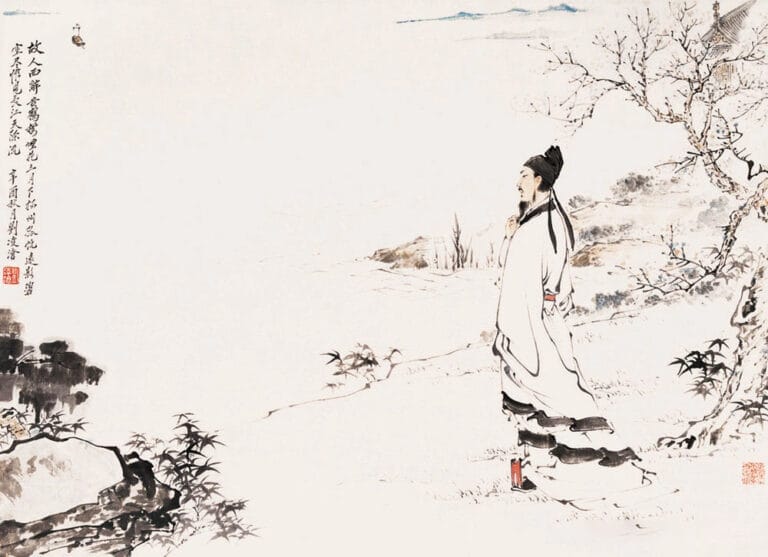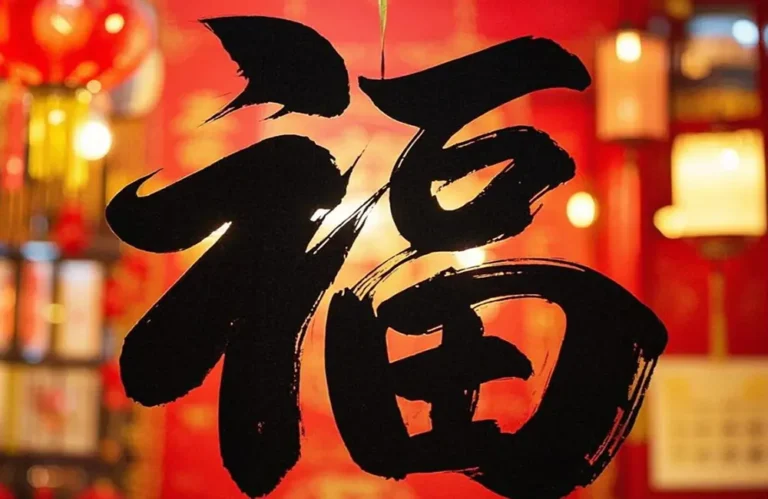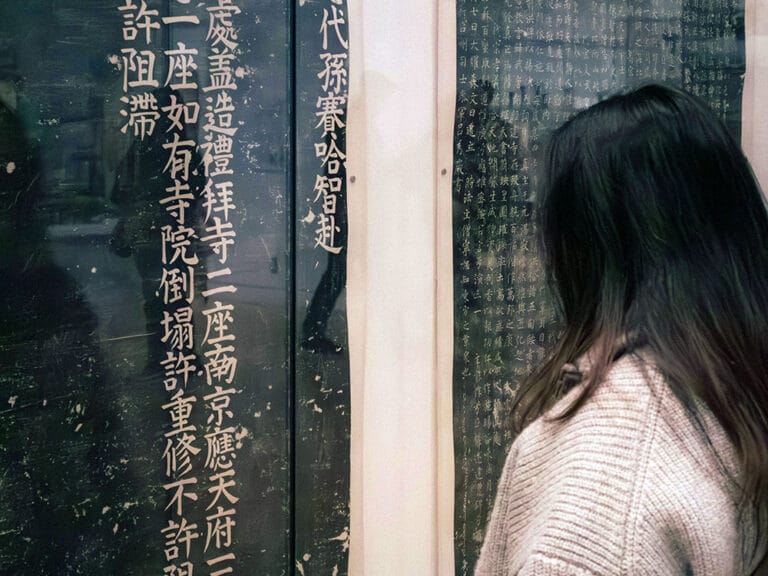Written with love, shared with joy.
How to Write Fu in Different Ways?
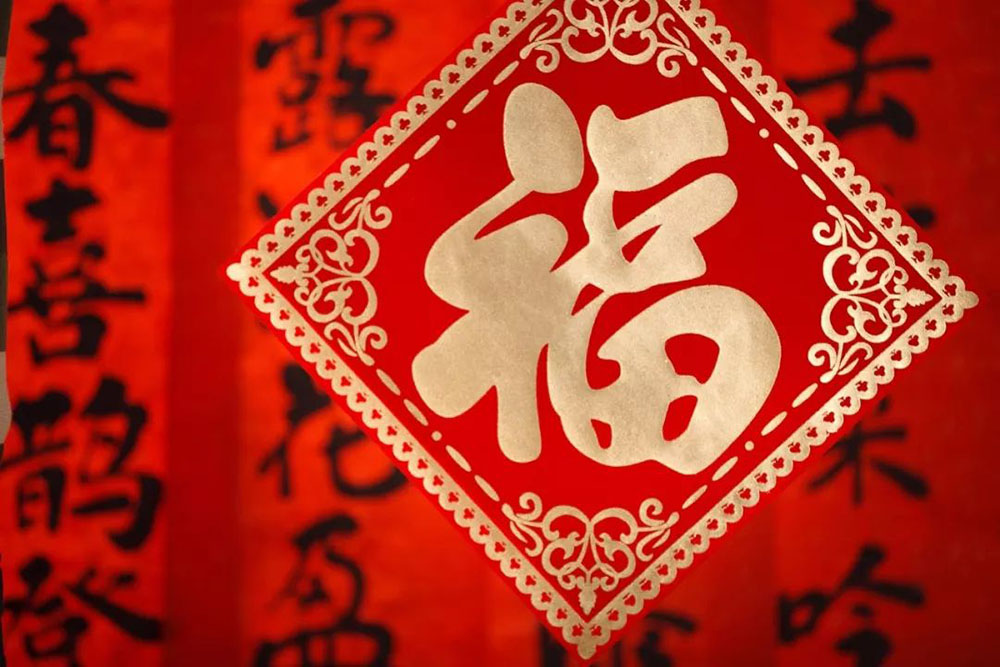
How to write Fu in different ways? The Chinese character 福 (pronounced fu) is one of the most cherished and symbolic words in Chinese culture, representing blessings, happiness, and good fortune. Its meaning resonates deeply across centuries, becoming an integral part of celebrations, art, and daily life. Rooted in history and tradition, 福 transcends its literal translation to embody aspirations for prosperity and harmony.
Etymology and Historical Roots
How to write Fu in different ways? Basically the character 福 is composed of two parts:
- 礻 (Shì) – Derived from a radical associated with religious rituals and offerings.
- 畐 (Fú) – Symbolizing abundance, often depicted as a field filled with crops.
Together, these elements convey a vision of receiving divine blessings for a plentiful life. Historically, 福 was used in sacrificial contexts, where offerings were made to seek protection and prosperity from deities.
Cultural Significance
福 has a profound presence in Chinese festivals, architecture, and personal practices:
- New Year Symbolism: During the Chinese New Year, families paste 福 upside-down (倒福), symbolizing that blessings have arrived (a pun in Chinese: “倒” sounds like “到,” meaning “arrive”).
- Everyday Blessings: Whether embroidered on clothing, carved into furniture, or painted on walls, 福 serves as a constant reminder of life’s joys and aspirations.
- Spiritual Meaning: Beyond material prosperity, 福 encompasses health, harmony, and peace, aligning with the holistic values of Chinese culture.
“福” Across Different Calligraphy Styles
Chinese calligraphy, with its rich history, transforms the simple character 福 into a medium of artistic expression. Each script style offers a unique interpretation, reflecting the character’s versatility and beauty. Below is an introduction to how 福 is written in different calligraphic styles:
- Seal Script (篆书). The oldest form of Chinese characters, originating in the Qin Dynasty (221–207 BCE). Seal script versions of 福 are intricate and structured, often seen on stone carvings and seals. The rounded and balanced strokes give a sense of solemnity and antiquity.
- Clerical Script (隶书). Popular during the Han Dynasty (206 BCE–220 CE), clerical script introduces flatter, more horizontal strokes. Writing 福 in clerical script emphasizes its simplicity and dignity, reflecting the era’s shift toward practicality.
- Regular Script (楷书). Developed during the Wei and Jin Dynasties, regular script is the most standardized and widely recognized style today. A 福 in regular script is precise and balanced, suitable for formal settings and clear representation.
- Running Script (行书). A semi-cursive style, running script bridges regular and cursive scripts with fluid yet readable strokes. 福 written in running script exudes grace and dynamism, making it a popular choice for casual artistic expressions.
- Cursive Script (草书). Known for its free-flowing and expressive nature, cursive script is the most abstract of all styles. A 福 in cursive script transforms into a dance of lines, allowing the calligrapher’s emotions to take center stage.
I collected 108 different styles of Fu as following so that you can learn how to write Fu in different ways in your calligraphy practise:
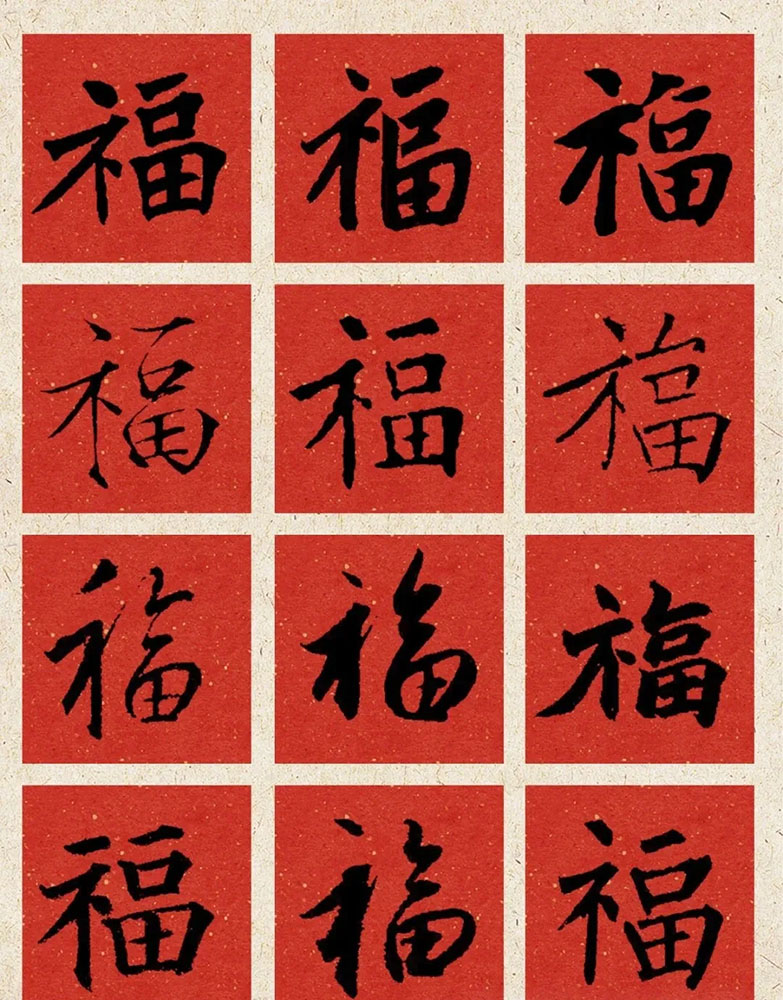
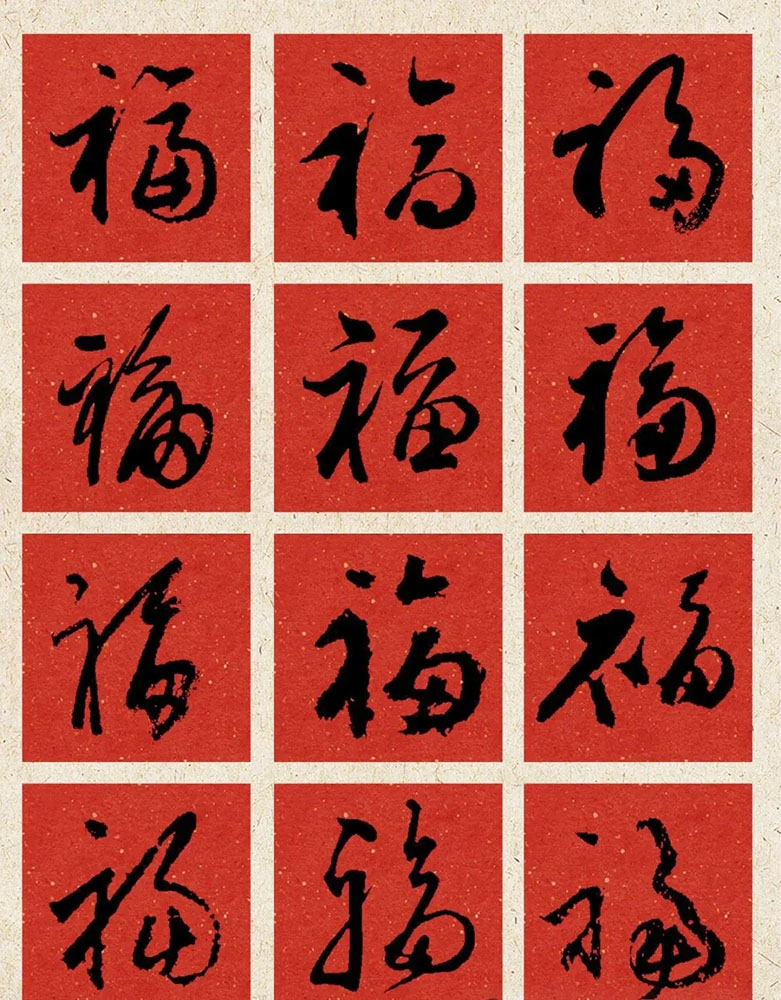
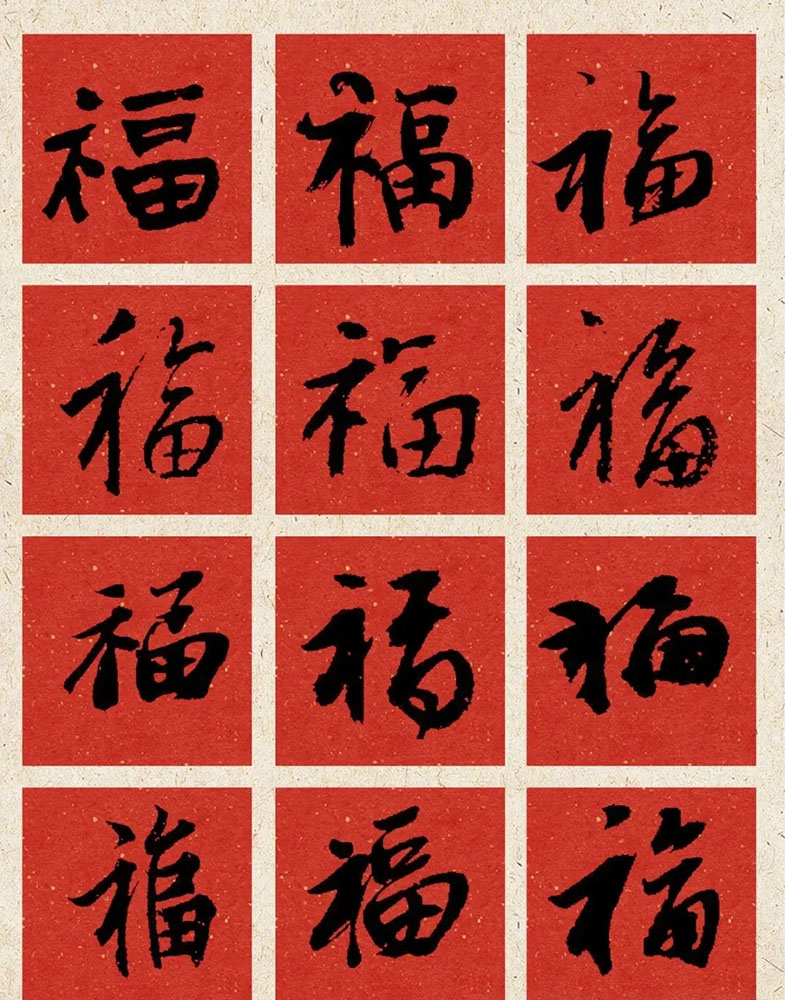
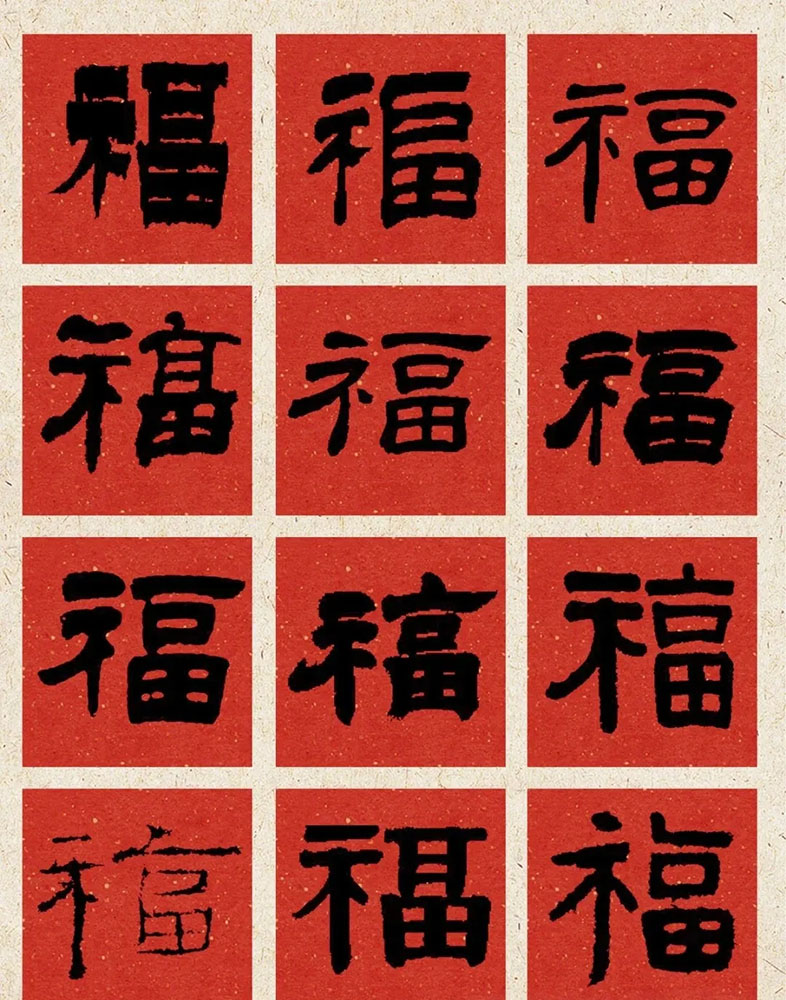
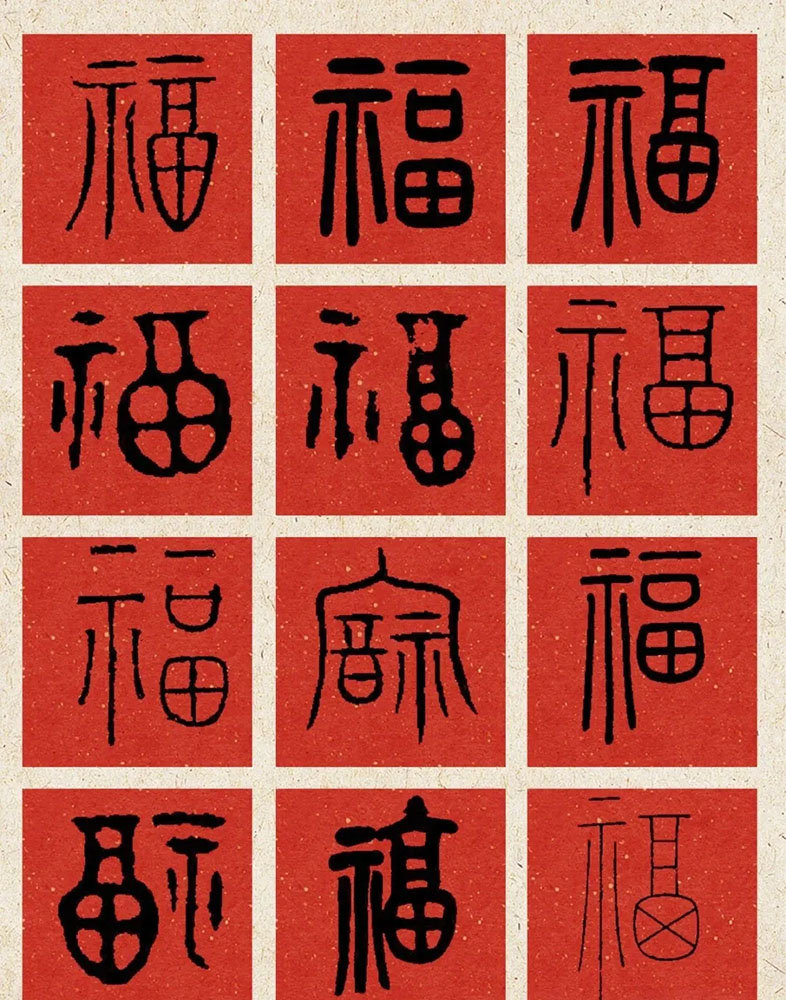
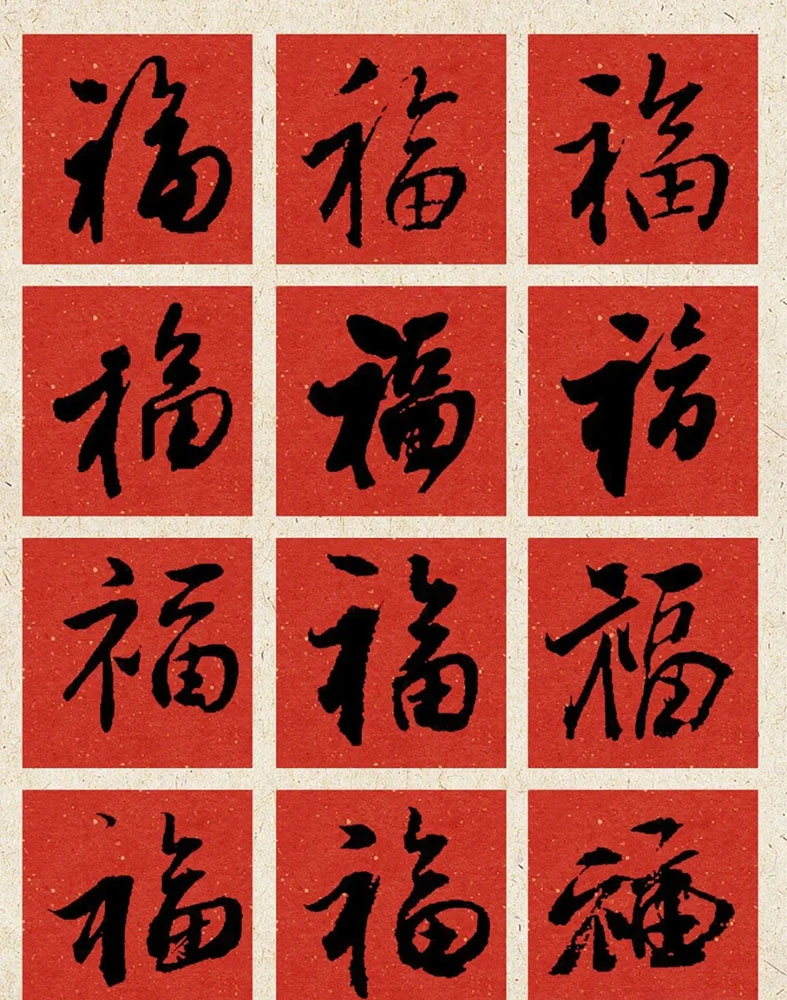
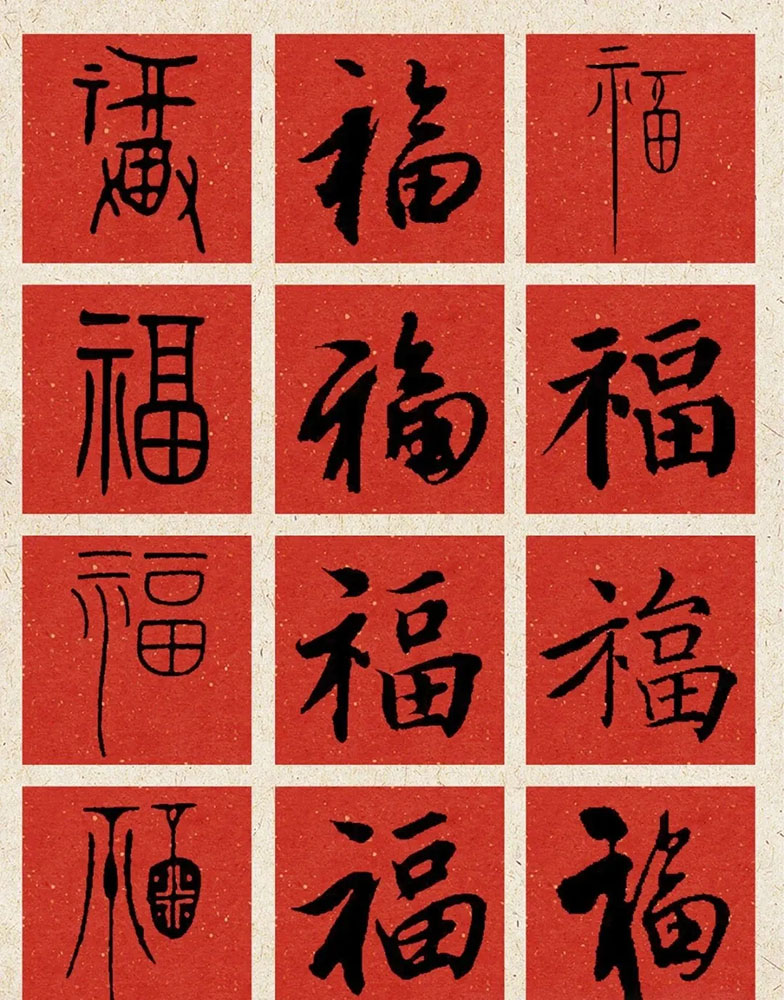
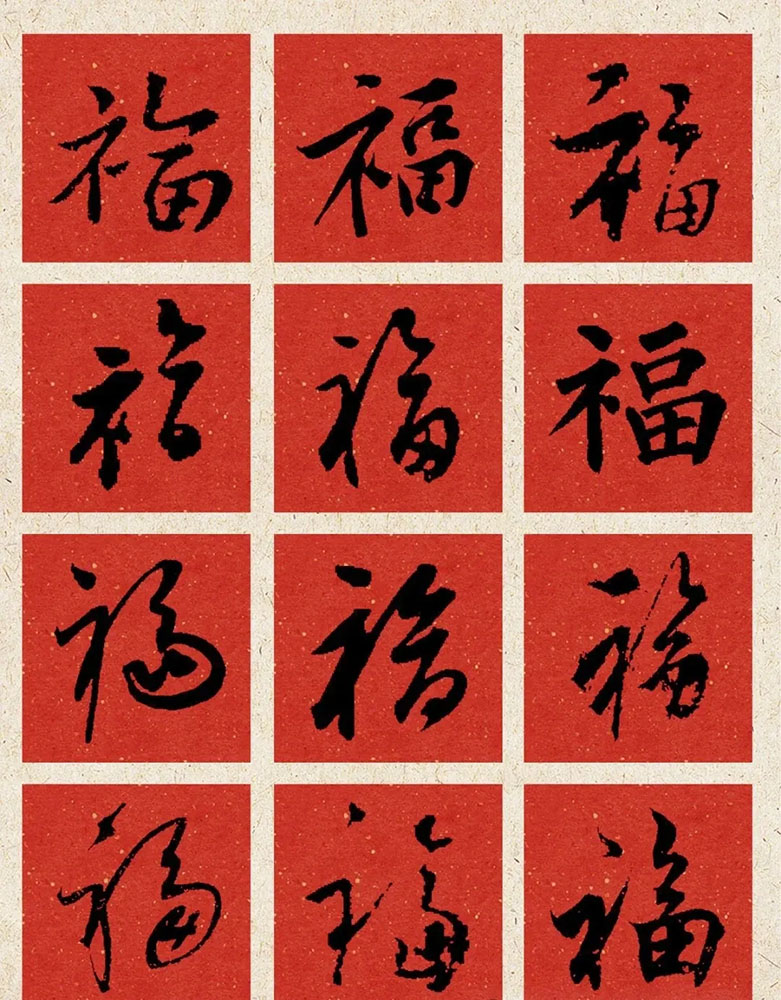
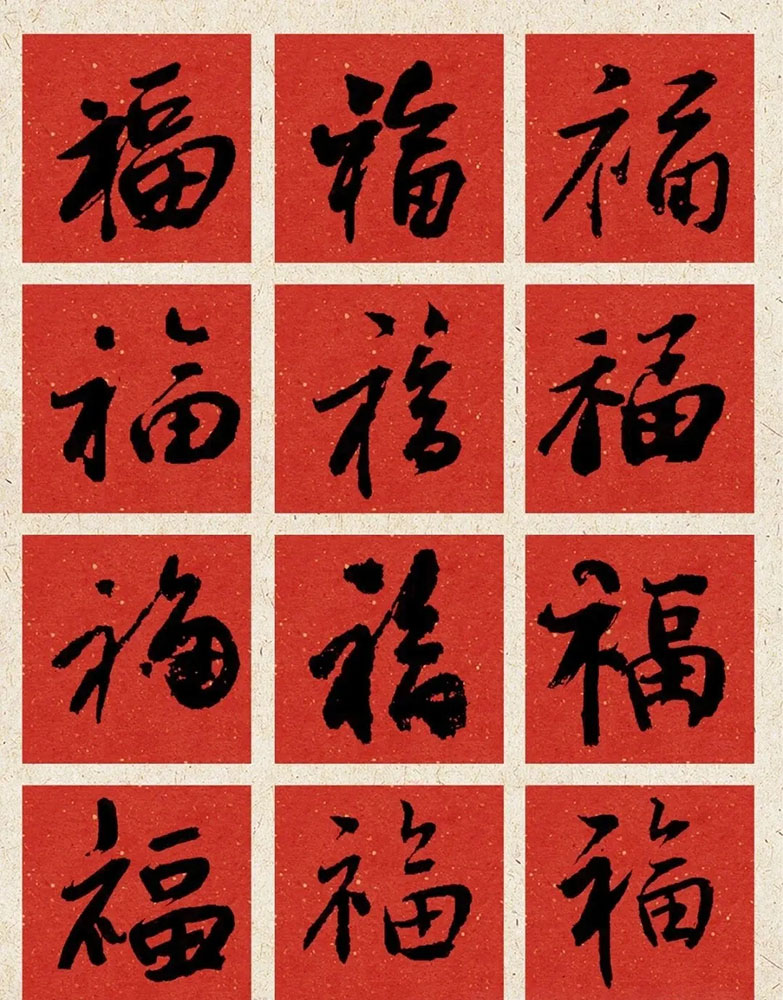
The Placement of the 福: Upright and Upside-Down
In Chinese tradition, the placement of the 福 character, symbolizing good fortune and blessings, carries deep cultural meaning. Whether it is displayed upright or upside-down depends on the location and its intended symbolism.
An upside-down 福 is often found in areas such as water jars, trash bins, or cabinets within the home. This practice stems from a Chinese pun: “福倒” (fú dào), which sounds like “福到” (blessings have arrived). By placing 福 upside-down on these containers, it conveys the idea that fortune stays within the household, rather than being emptied or discarded. It’s a creative way to safeguard prosperity and express hope for continued abundance.
On the other hand, an upright 福 is essential in prominent areas like the front door or key living spaces such as the living room and bedroom. At the front door, it signifies an open invitation for blessings to enter the home, symbolizing harmony and prosperity for the household. In family-centered spaces, it reflects the wish to gather and retain good fortune where it matters most.
This simple yet profound custom has become an integral part of Chinese New Year traditions, encapsulating the community’s aspirations for happiness, harmony, and a bright future. The choice between upright and upside-down placement reflects a nuanced understanding of how to align cultural symbolism with everyday life.


